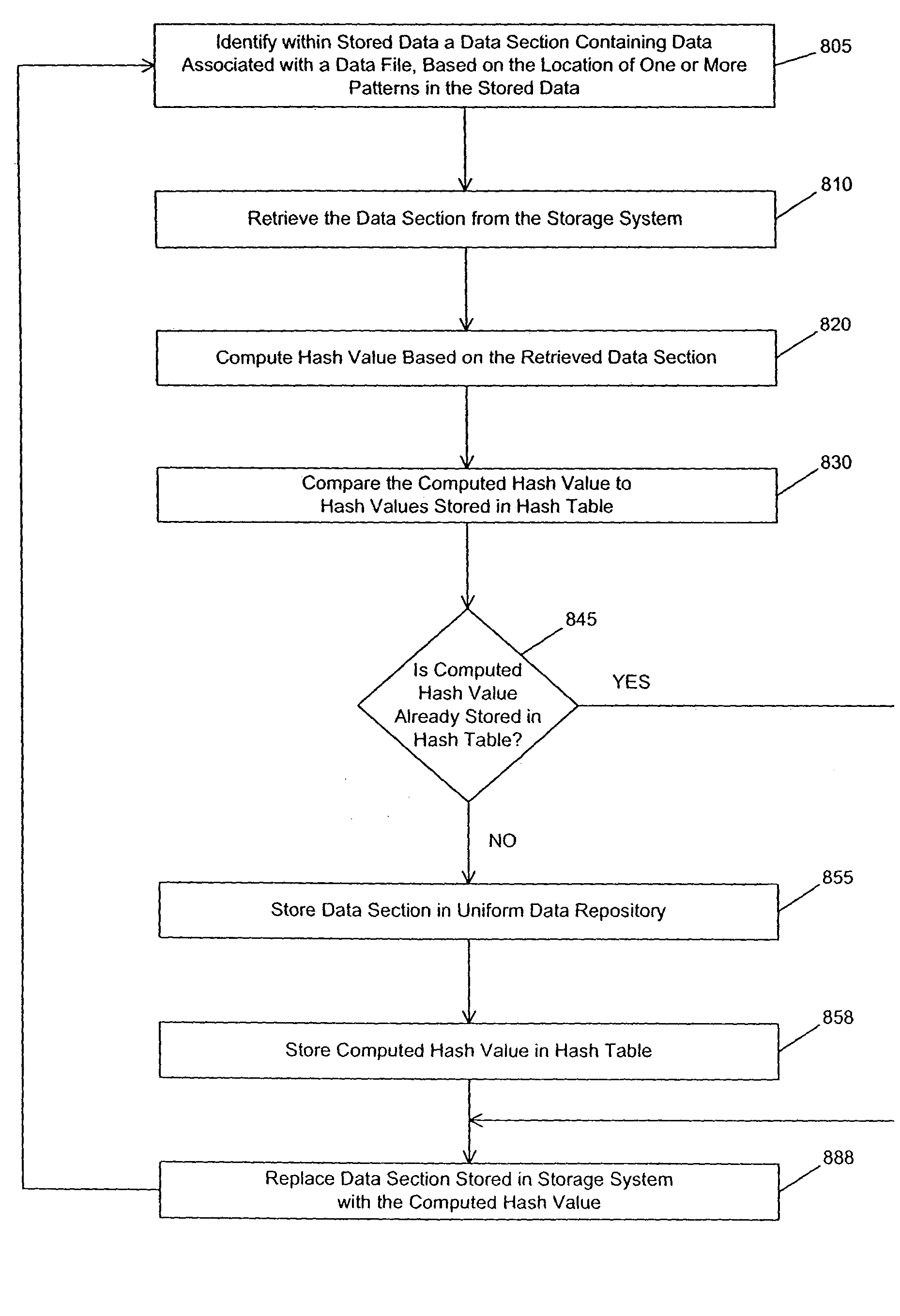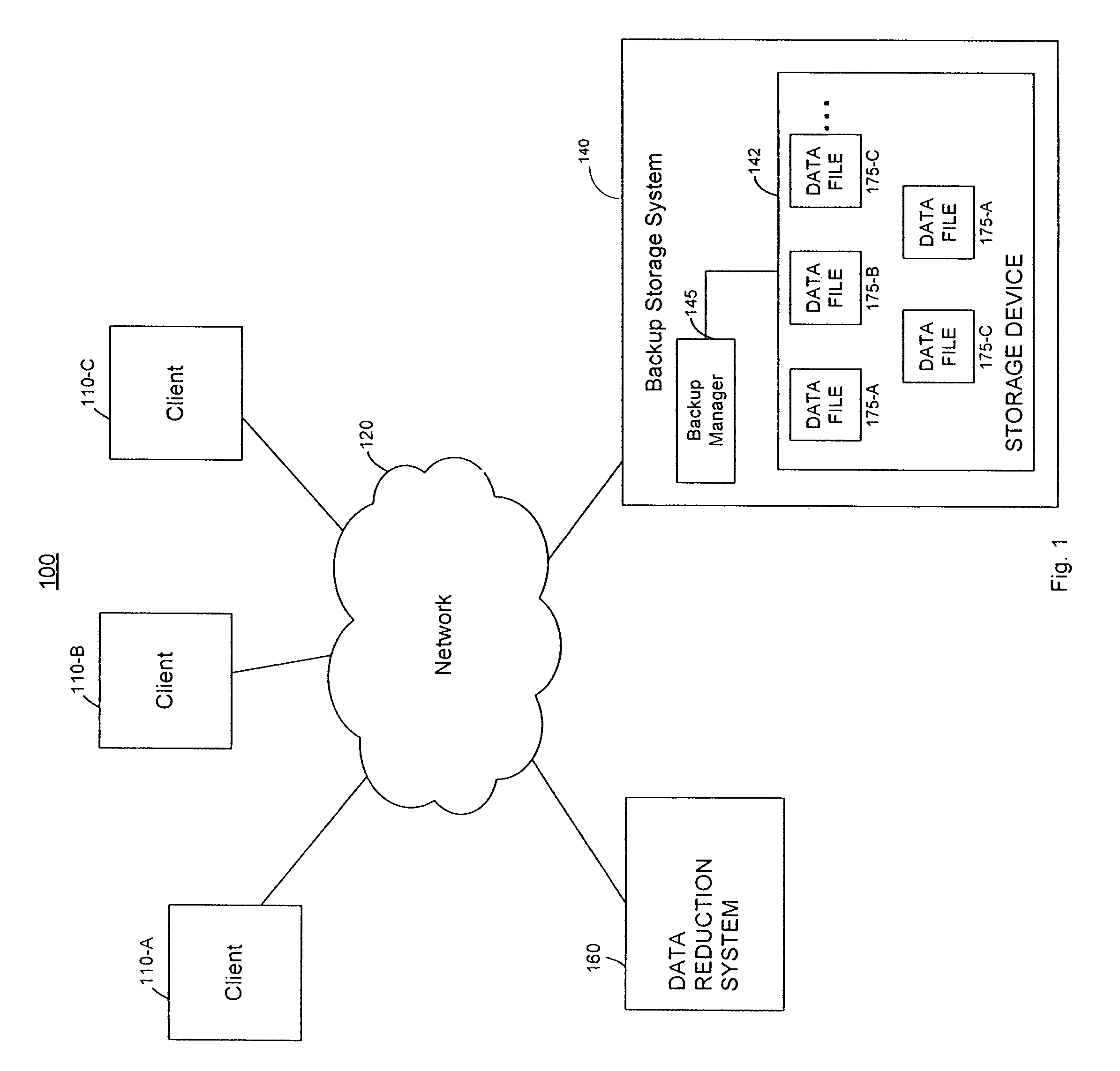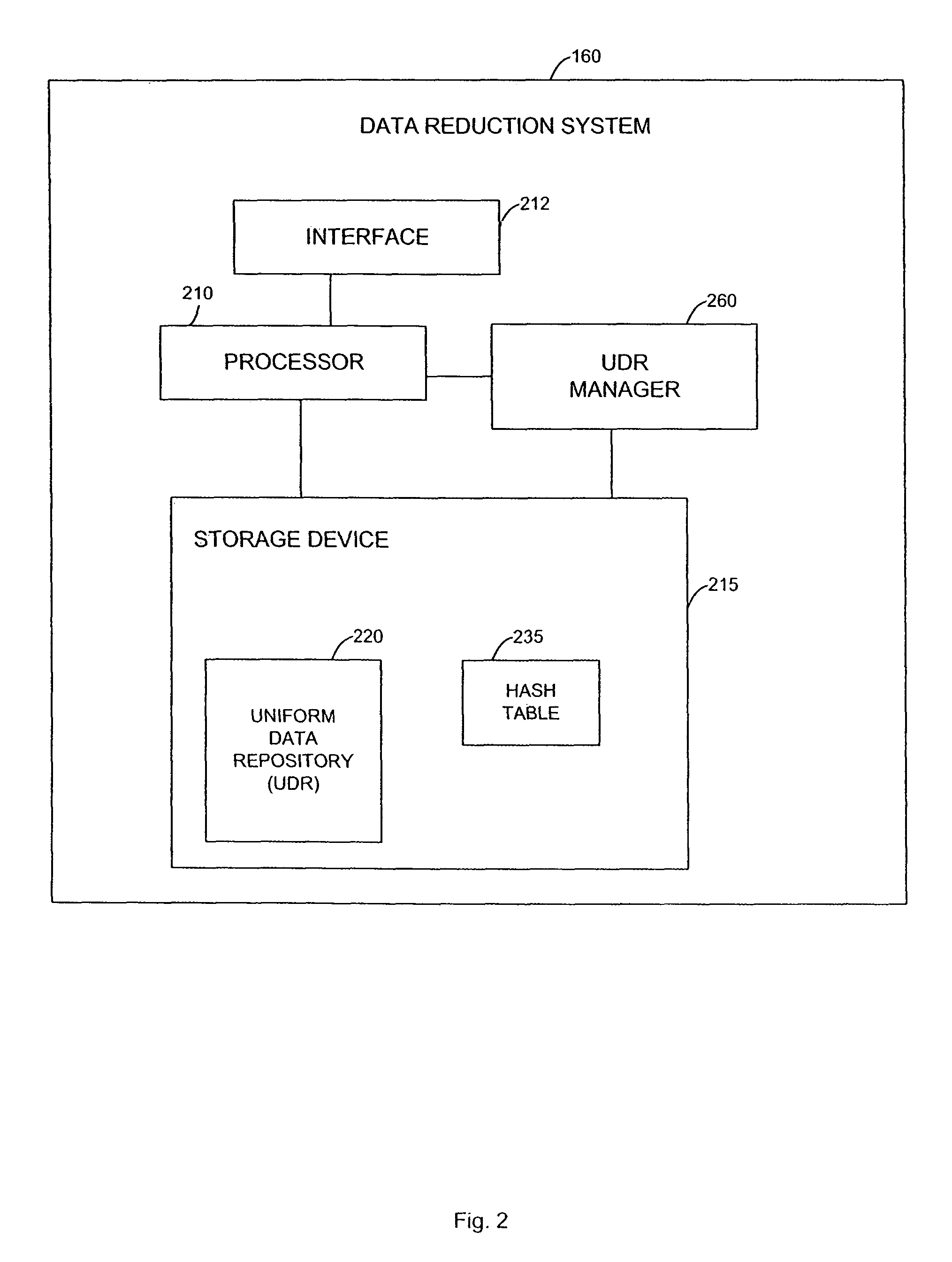System and method for identifying and mitigating redundancies in stored data
a technology of stored data and redundancy, applied in the field of storage systems, can solve the problems of large and continuously increasing quantity of data generated by the need to preserve data in backup storage systems, undesirable and inefficient use of resources, redundancy in stored data within backup storage systems,
- Summary
- Abstract
- Description
- Claims
- Application Information
AI Technical Summary
Benefits of technology
Problems solved by technology
Method used
Image
Examples
Embodiment Construction
[0054]In one example of an embodiment of the invention, methods and systems are provided for identifying structures, such as data files, within stored data, when the format of the stored data is unknown, or when the format is known but no means is available to process data organized in accordance with the format. For example, the methods and systems described herein may be used to analyze data stored on tapes in a tape library when the format of the stored data is unknown, and / or to migrate the data from the tape library to a virtual tape library (VTL) in an efficient manner.
[0055]In one example, a selected portion, or portions, of data stored in a storage system are examined to identify a pattern. The pattern may comprise a recurring arrangement of numerical and alphanumeric values identifiable as a header section of a data file, for example. Alternatively, a pattern may comprise a specific sequence of bits or bytes at a stored data block level. After a pattern is identified, and i...
PUM
 Login to View More
Login to View More Abstract
Description
Claims
Application Information
 Login to View More
Login to View More - R&D
- Intellectual Property
- Life Sciences
- Materials
- Tech Scout
- Unparalleled Data Quality
- Higher Quality Content
- 60% Fewer Hallucinations
Browse by: Latest US Patents, China's latest patents, Technical Efficacy Thesaurus, Application Domain, Technology Topic, Popular Technical Reports.
© 2025 PatSnap. All rights reserved.Legal|Privacy policy|Modern Slavery Act Transparency Statement|Sitemap|About US| Contact US: help@patsnap.com



